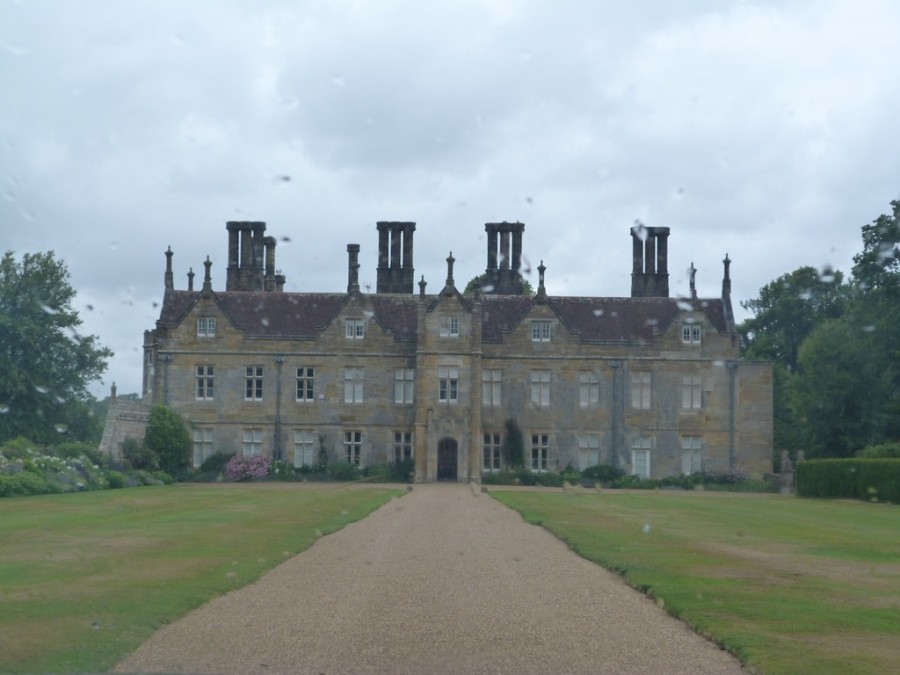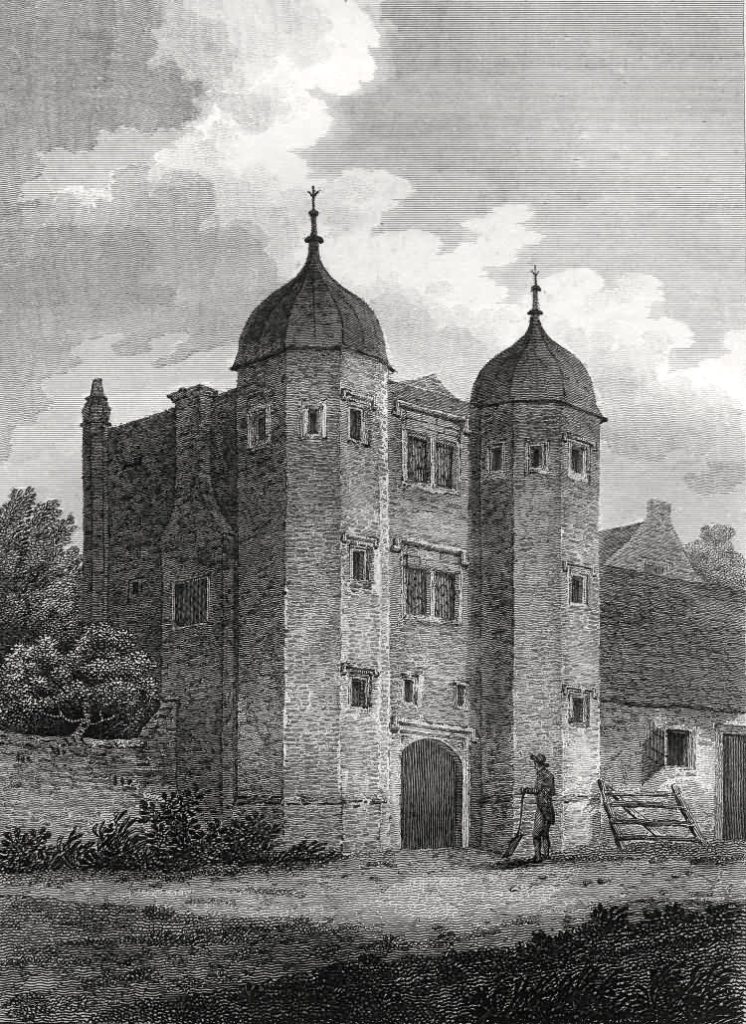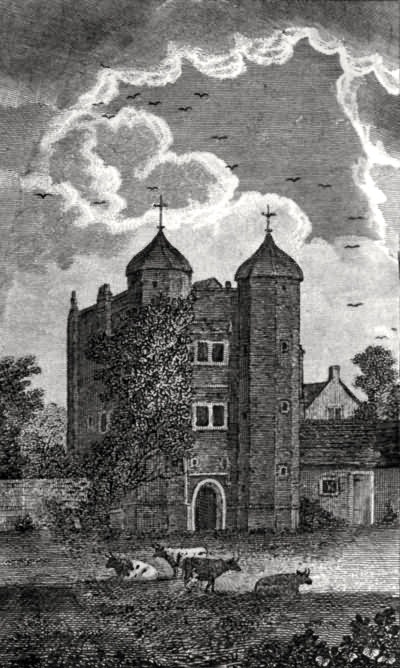There are many historic buildings in the Hartfield and District area, other than the churches, schools and locations covered by other headings such as the High Street and Church Street. Early original pictures and up to date comparison pictures should provide a time line of the passing years. Several of these properties have important histories and many have had illustrious occupants.
Bolebroke or sometimes Bolebrook Castle.
Spelling was not considered that important as long as it sounded the same!
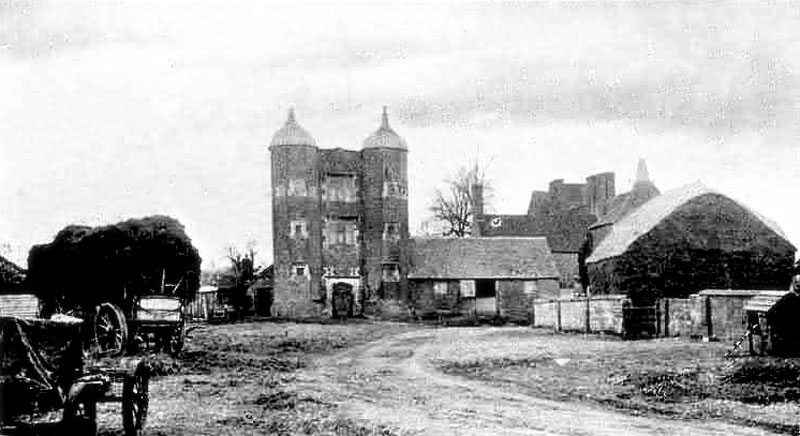

These two early pictures show Bolebroke or Bolebrook Castle with its magnificent Gatehouse in a very decrepit state. The main building can be seen to the right and behind the stable building with a substantial set of chimneys. In the first picture the building looks very much unused just one side of a farmyard whereas there are two figures standing by the entrance in the second
This is the story of Bolebrook as told by Sussex Pictures of the Past with illustration from 1809.

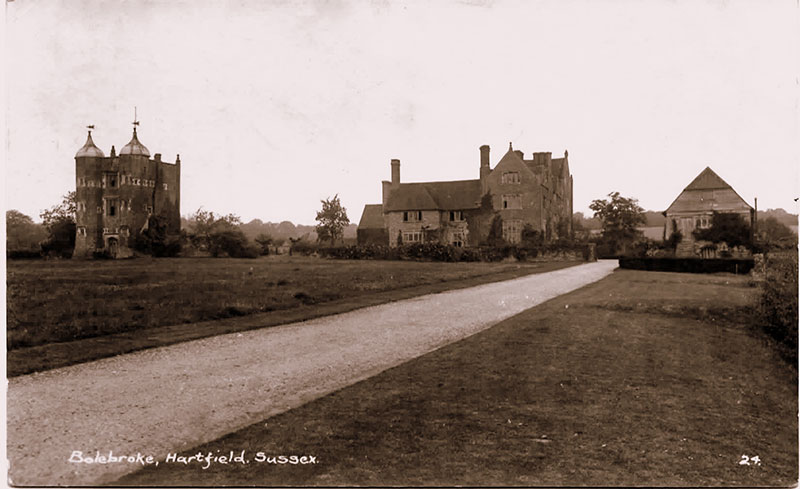
This splendid postcard was posted in 1925 which doubtless provides an excellent guide to the age of the photo. Note that all the adjoining and farm buildings have entirely disappeared leaving the gatehouse in the somewhat isolated position it is today! The two towers have even gained weathervanes.

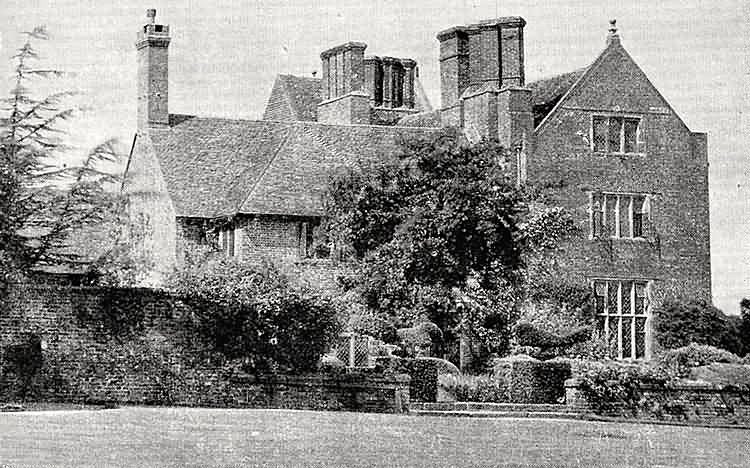
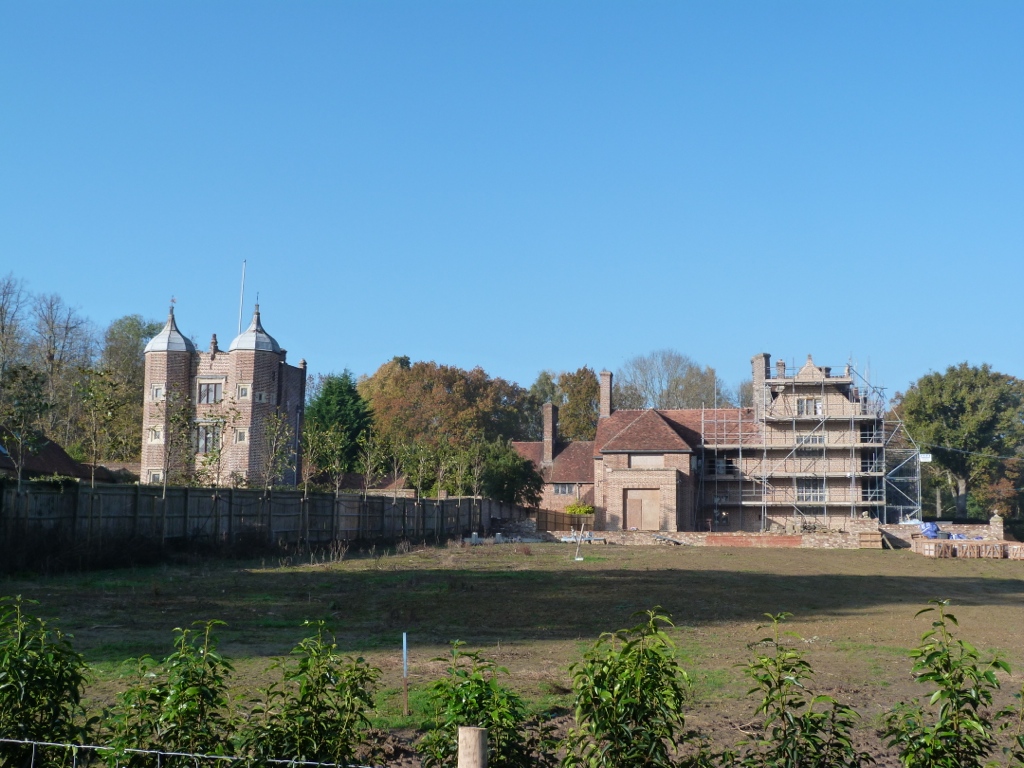
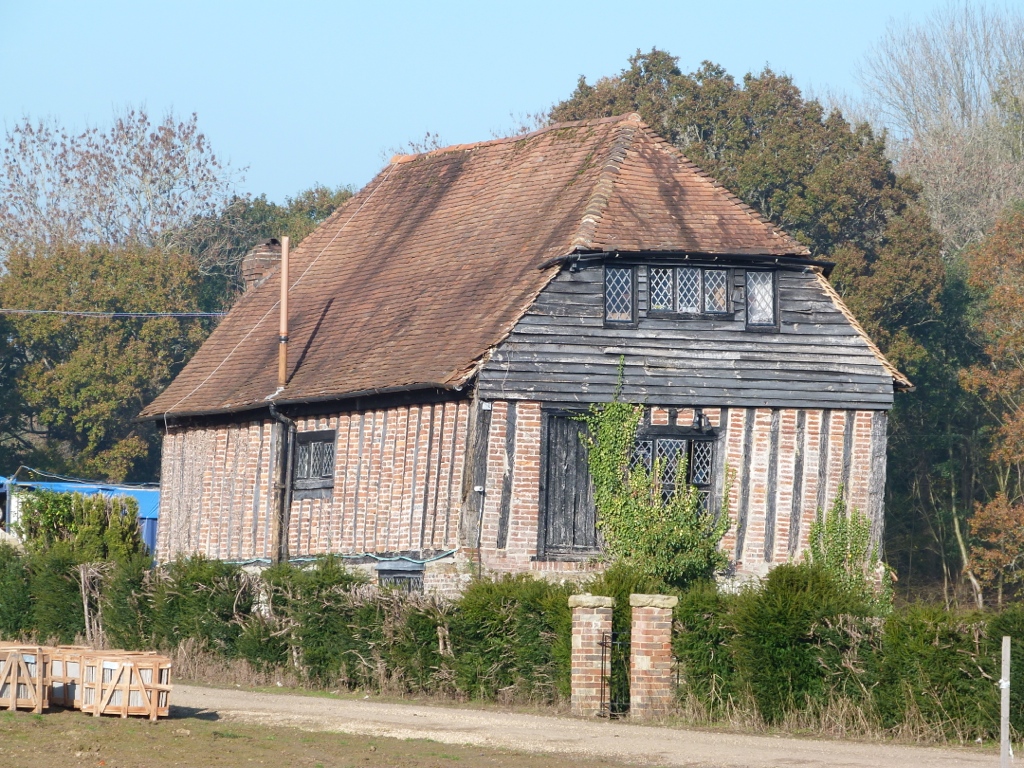
Bolebrook Mill
On the other side of what we now know as Edenbridge Road from the ‘castle’ is Bolebrook Mill, another wonderful piece of history that is even mentioned in the Domesday book of 1086. Accessed from Perryhill Lane, Bolebrook Mill is actually formed of two mills. The first which is the nearer building in the picture below was built on the stream that runs down the valley and used the flow of the stream to drive an ‘undershot’ wheel. As the demand for milling increased a mill pond was constructed to collect the stream water and a second mill was built with an overshot wheel to make use of the extra energy. In order to gain more water for the pond a complex stream was built under the main road and across the field the other side towards the main tributary of the Medway. A substantial dam was then built across the river to lift the level sufficiently high to enable the water to reach the mill and ensure there was always sufficient energy to grind the corn.
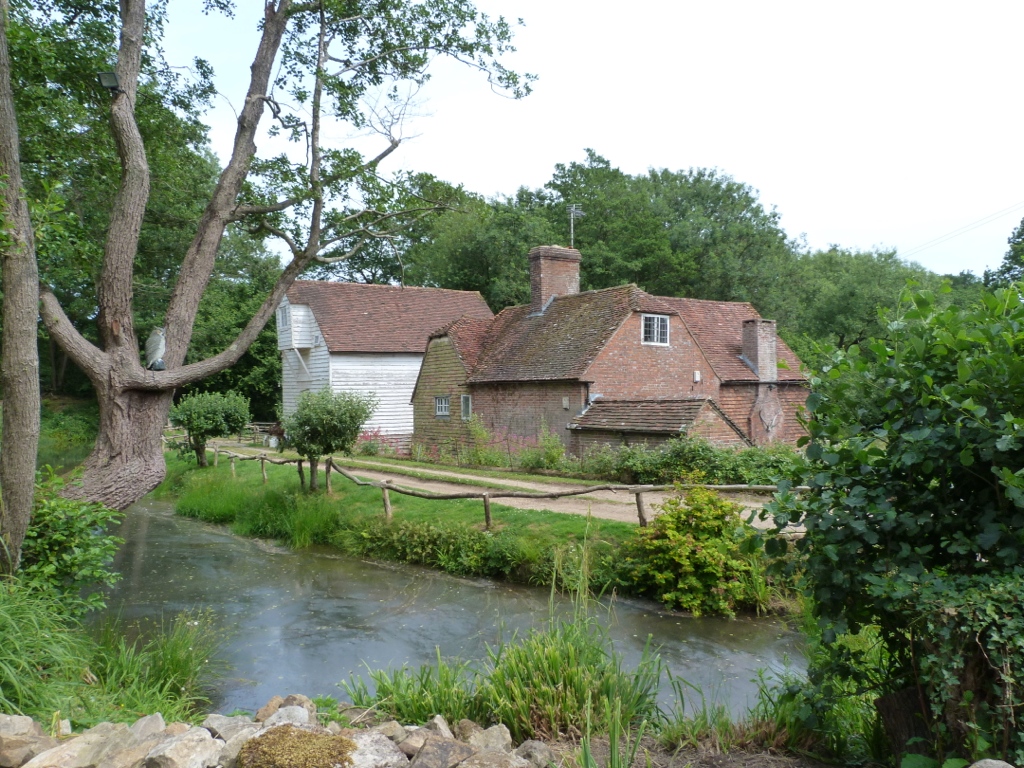
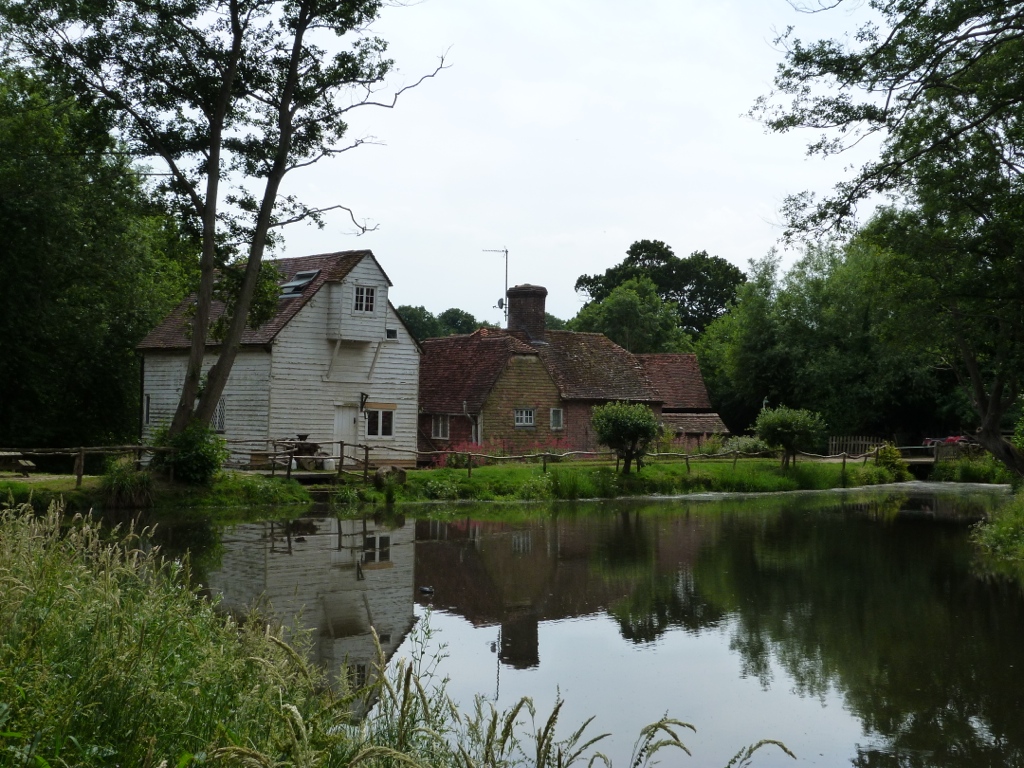
The Lychgate and Lychgate Cottage.
At the entrance to St Mary’s Church at the top of Church Street, is The Lychgate and Lychgate Cottage, another medieval building which was by tradition occupied by the Parish Clerk or Verger A ‘lychgate’ was a covered space or passage which would allow the pall-bearers to pause out of the rain to allow the mourners to settle down in the Church. In the Hartfield case the area above the passage is a bedroom.
To go directly to Church Street click here.
The date 1520 was shown on the building, as in the picture below but it is considered that it may be as early as 1475. The lean-to extension was added in 1875
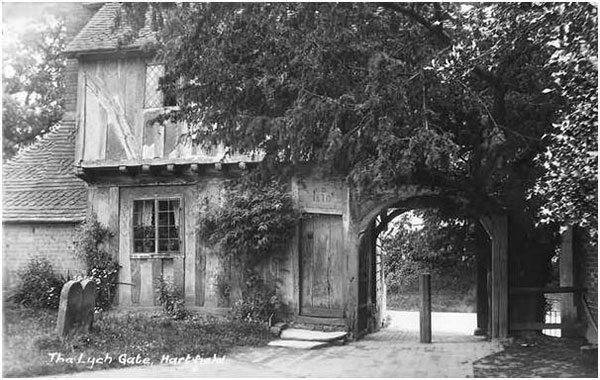
And some recent pictures. Note the ground floor window has been enlarged and the post in the centre of the passage has been removed.

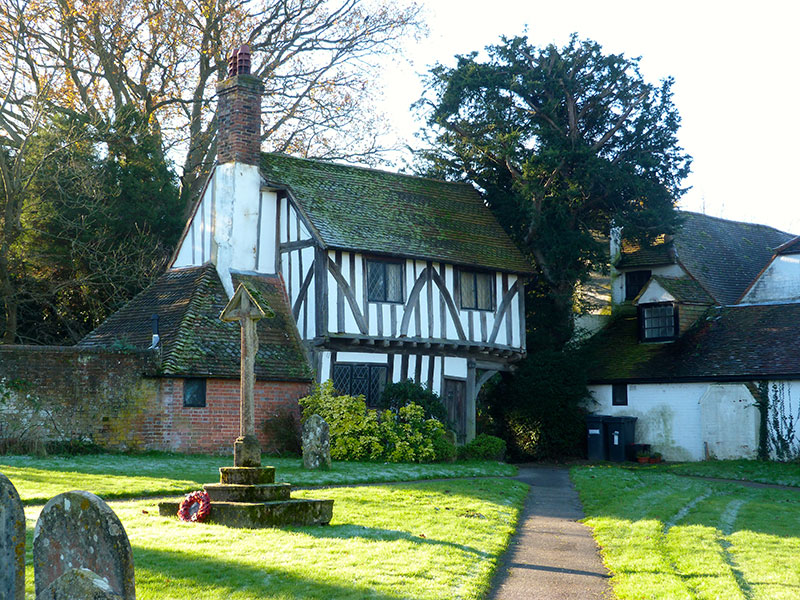
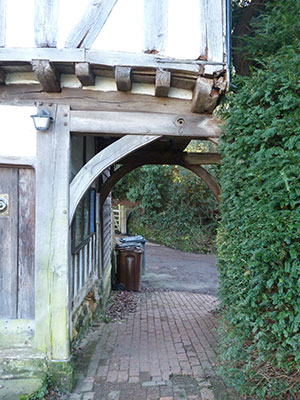

Below you can see how the cottage bedroom rests on the lychgate.
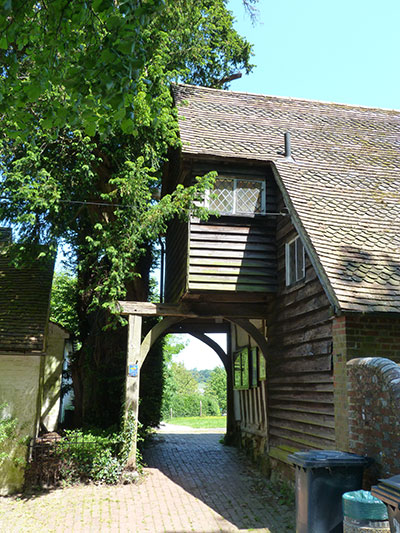

If you look up as you pass through the lychgate you will see the inscription below which says:
“SEEK THE LORD AND HIS STRENGTH”
“THE HEART OF THEM REJOICE THAT SEEK THE LORD”
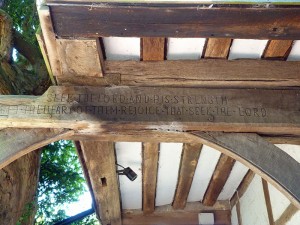
______________________________________________________________________________________________________________
Buckhurst Park
The Home of William, Earl De La Warr and his wife Anne and their family
